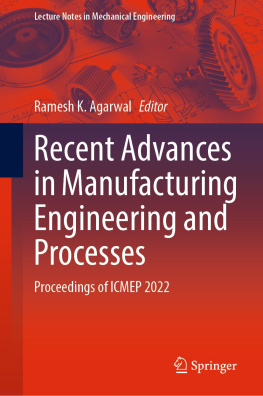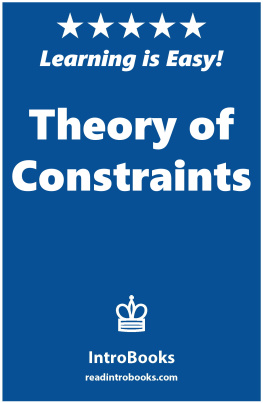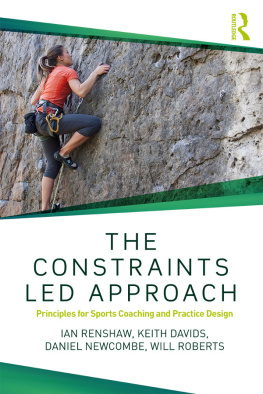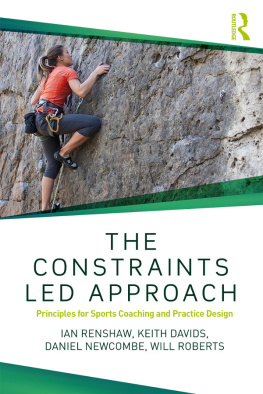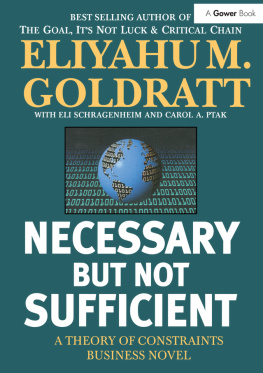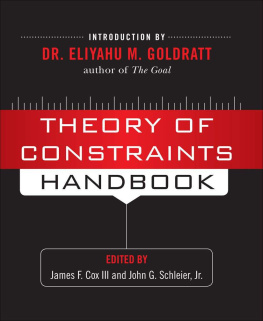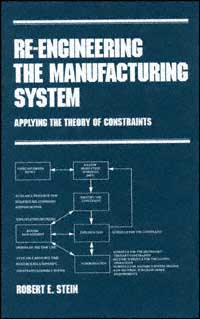MANUFACTURING ENGINEERING AND MATERIALS PROCESSING
A Series of Reference Books and Textbooks |
Geoffrey Boothroyd
University of Rhode Island
Kinsgston, Rhode Island |
| 1. Computers in Manufacturing, U. Rembold, M. Seth, and J.S. Weinstein |
| 2. Cold Rolling of Stell, William L. Robers |
| 3. Strengthening of Ceramics: Treatments, Tests, and Design Applications, Harry P. Kirchner |
| 4. Metal Forming: The Application of Limit Analysis, Betzalel Avitzur |
| 5. Improving Productivity by Classification, Coding, and Data Base Standardization: The Key to Maximizing CAD/CAM and Group Technology, William F. Hyde |
| 6. Automatic Assembly, Geoffrey Boothroyd, Corrado Poli, and Laurence E. Murch |
| 7. Manufacturing Engineering Processes, Leo Alting |
| 8. Modern Ceramic Engineering: Properties, Processing, and Use in Design, David W. Richerson |
| 9. Interface Technology for Computer-Controlled Manufacturing Processes, Ulrich Rembold, Darl Armbruster, and Wolfgang lzmann |
| 10. Hot Rolling of Steel, William L. Roberts |
| 11. Adhesives in Manufacaturing, edited by Gerald K. Schneberger |
| 12. Understanding the Manufacturing Process: Key to Successful CAD/CAM Implementation, Joseph Harrington, Jr. |
| 13. Industrial Materials Science and Engineering, edited by Lawrence E. Murr |
| 14. Lubricants and Lubrication in Metalworking Operations, Elliot S. Nachtman and Serope Kalpakjian |
| 15. Manufacturing Engineering: An Introduction to the Basic Functions, John P. Tanner |
| 16. Computer-Integrated MAnufacturing Technology and Systems, Ulrich Rembold, Christian Blume, and Ruediger Dilman |
| 17. Connections in Eletronic Assemblies, Anthony J. Bilotta |
| 18. Automation for Press Feed Operations: Applications and Economics, Edward Walker |
| 19. Nontraditional Manufacturing PRocesses, Gary F. Benedict |
| 20. Programmable Controllers for Factory Automation,David G. Johnson |
| 21. Printer Circuit Assembly Manufacturing, Fred W. Kear |
| 22. Manufacturing High Technology Handbook, edited by Donatas Tijunelis and Keith E. McKee |
| 23. Factory Information Systems: Design and Implementation for CIM Management and Control, John Gaylord |
| 24. Flat Processing of Steel, William L. Roberts |
| 25. Soldering for Electronic Assemblies, Leo P. Lambert |
| 26. Flexible Manufacturing Systems in Practice: Applications, Design, and Simulation, Joseph Talavage and Roger G. Hannam |
| 27. Flexible Manufacturing Systems: Benefits for the Low Inventory Factory, John E. Lenz |
| 28. Fundamentals of Machining and Machine Tools: Second Edition, Geoffrey Boothroyd and Winston A. Knight |
| 29. Computer-Automated Process Planning for World-Class Manufacturing, James Nolen |
| 30. Steel-Rolling Technology: Theory and Practice, Vladimir B. Ginzburg |
| 31. Computer Integrated Electronics Manufacturing and Testing, Jack Arabian |
| 32. In-Process Measurement and Control, Stephan D. Murphy |
| 33. Assembly Line Design: Methodology and Applications, We-Min Chow |
| 34. Robot Technology and Applications, edited by Ulrich Rembold |
| 35. Mechanical Deburring and Surface Finishing Technology, Alfred F. Scheider |
| 36. Manufacturing Engineering: An Introduction to the Basic Functions, Second Edition, Revised and Expanded, John P. Tanner |
| 37. Assembly Automation and Product Design, Geoffrey Boothroyd |
| 38. Hybrid Assemblies and Multichip Modules, Fred W. Kear |
| 39. High-Quality Steel Rolling: Theory and Practice, Vladimir B. Ginzburg |
| 40. Manufacturing Engineering Processes: Second Edition, Revised and Expanded, Leo Alting |
| 41. Metalworking Fluids, edited by Jerry P. Byers |
| 42. Coordinate Measuring Machines and Systems, edited by John A. Bosch |
| 43. Arc Welding Automation, Howard B. Cary |
| 44. Facilities Planning and Materials Handling: Methods and Requirements, Vijay S. Sheth |
| 45. Continuous Flow Manufacturing: Quality in Design and Processes, Pierre C. Guerindon |
| 46. Laser Materials Processing, edited by Leonard Migliore |
| 47. Re-Engineering the Manufacturing System: Applying the Theory of Constraints, Robert E. Stein |
| 48. Handbook of Manufacturing Engineering, edited by Jack M. Walker |
|


